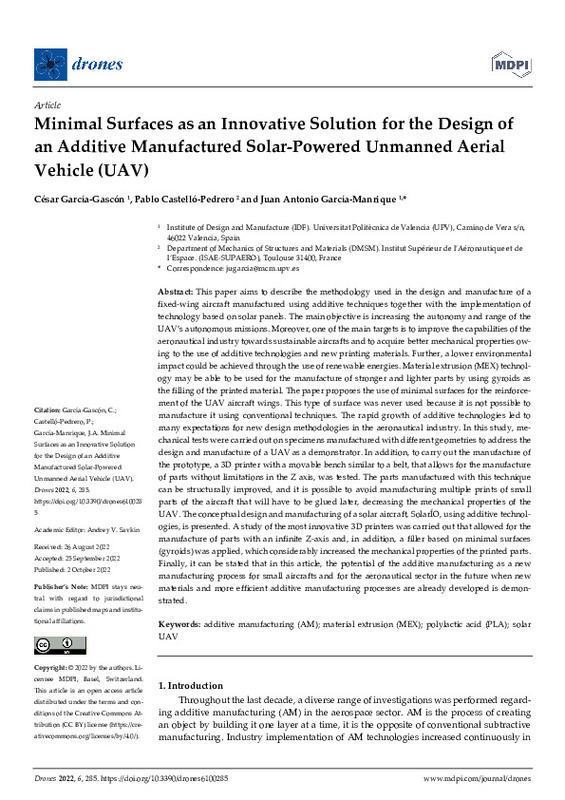JavaScript is disabled for your browser. Some features of this site may not work without it.
Buscar en RiuNet
Listar
Mi cuenta
Estadísticas
Ayuda RiuNet
Admin. UPV
Minimal Surfaces as an Innovative Solution for the Design of an Additive Manufactured Solar-Powered Unmanned Aerial Vehicle (UAV)
Mostrar el registro completo del ítem
García-Gascón, C.; Castelló-Pedrero, P.; García Manrique, JA. (2022). Minimal Surfaces as an Innovative Solution for the Design of an Additive Manufactured Solar-Powered Unmanned Aerial Vehicle (UAV). Drones. 6(10):1-27. https://doi.org/10.3390/drones6100285
Por favor, use este identificador para citar o enlazar este ítem: http://hdl.handle.net/10251/193394
Ficheros en el ítem
Metadatos del ítem
| Título: | Minimal Surfaces as an Innovative Solution for the Design of an Additive Manufactured Solar-Powered Unmanned Aerial Vehicle (UAV) | |
| Autor: | ||
| Entidad UPV: |
|
|
| Fecha difusión: |
|
|
| Resumen: |
[EN] This paper aims to describe the methodology used in the design and manufacture of a fixed-wing aircraft manufactured using additive techniques together with the implementation of technology based on solar panels. The ...[+]
|
|
| Palabras clave: |
|
|
| Derechos de uso: | Reconocimiento (by) | |
| Fuente: |
|
|
| DOI: |
|
|
| Editorial: |
|
|
| Versión del editor: | https://doi.org/10.3390/drones6100285 | |
| Coste APC: |
|
|
| Código del Proyecto: |
|
|
| Agradecimientos: |
|
|
| Tipo: |
|









